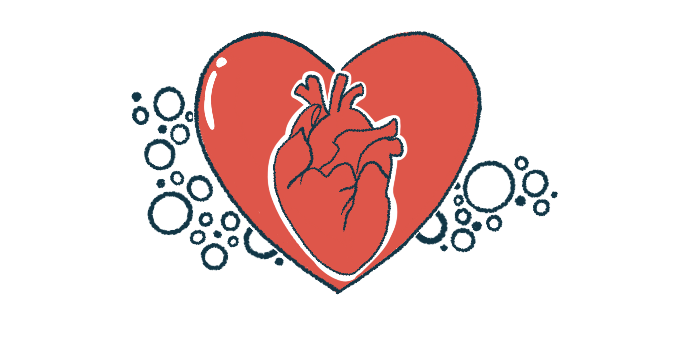Increased Arterial Stiffness Seen in Patients in Long-term Remission
Blocking endothelin-1 receptors reduced arterial stiffness in a small trial
Written by |

People with ANCA vasculitis (AAV) in long-term remission have increased arterial stiffness, a sign of cardiovascular disease, a study reports.
The mechanisms underlying acute cardiovascular disease risk in AAV were associated with endothelin-1, a molecule that promotes blood vessel narrowing. In the placebo-controlled study, blocking endothelin-1 receptors was found to reduce arterial stiffness in a small group of patients diagnosed with AAV.
“Our findings provide insight into the excess cardiovascular risk that defines AAV, and they offer a mechanism-based rationale for a new treatment that might improve long-term patient outcomes,” the scientists wrote.
The study, “Arterial stiffness, endothelial dysfunction and impaired fibrinolysis are pathogenic mechanisms contributing to cardiovascular risk in ANCA-associated vasculitis,” was published in the journal Kidney International.
AAV is a group of autoimmune diseases marked by inflammation and damage to small- and medium-sized blood vessels, most commonly in the kidneys and lungs. Cardiovascular disease, which affects the heart and larger blood vessels, is also a complication of AAV, but its mechanisms are poorly understood.
In the study (NCT02062346), researchers at the University of Edinburgh, in the U.K., conducted a series of experiments to investigate cardiovascular disease in AAV.
First, the team enrolled 32 AAV patients (mean age of 55) in long-term remission, without apparent signs of cardiovascular disease, of whom 72% were male. A group of age- and sex-matched healthy volunteers were included as controls. Blood flow parameters were measured using forearm plethysmography, a method to assess changes in volume in different areas of the body.
Although 12 AAV patients had high blood pressure, there were no overall differences in blood pressure between patients and controls. Low-density lipoprotein-associated cholesterol levels, a cardiovascular disease risk factor, were lower in AAV patients than in controls.
Increased arterial stiffness associated with cardiovascular disease
However, individuals with AAV showed signs of increased arterial stiffness, which is associated with cardiovascular disease. Moreover, vasodilation — blood vessel widening due to the relaxation of blood vessel walls — was reduced in AAV.
Arterial stiffness can result from an imbalance in endothelin-1 (ET-1) — a molecule that promotes blood vessel narrowing and blood clotting — over the production of nitric oxide, which widens blood vessels, and tissue plasminogen activator (tPA), a protein that breaks down blood clots (fibrinolysis).
At study entry (baseline), in AAV versus controls, tPA activity was lower, while tPA antigen, a measure of active and inactive tPA, was higher. The levels of the naturally-occurring tPA blocker PAI-1 were also higher in AAV.
Stimulation with bradykinin, a potent vasodilator and a known stimulator of tPA release, caused an expected dose-dependent increase in active tPA and tPA antigen in both groups. Still, these effects were markedly reduced in AAV patients. Overall, the release of active tPA and tPA antigen in response to bradykinin was 50% lower in AAV patients than in controls.
ET-1 was two times higher in the bloodstream of AAV patients
ET-1, in contrast, was two times higher in the bloodstream of individuals with AAV compared with controls (1.8 vs. 0.9 picograms per milliliter of blood).
Across all participants, higher levels of ET-1 correlated with increased arterial stiffness, reduced vasodilation, and less release of active tPA and tPA antigen. These findings remained significant after adjusting for age, sex, body mass index (body fat content), blood pressure, heart rate, and kidney function.
Among patients, those currently receiving maintenance immunosuppression had higher ET-1 levels and worse tPA-related parameters than those receiving no maintenance treatment.
Next, 24 participants with AAV entered a study to evaluate the effects of blocking ET-1 receptors on arterial stiffness and fibrinolysis. Participants were randomly assigned to receive a selective endothelin-A receptor blocker, a dual endothelin-A/B receptor blocker, or a placebo.
With a placebo, arterial stiffness increased slightly over the course of the study, “in keeping with waning effects of antihypertensive medications,” the researchers wrote. In comparison, across both treatment groups, arterial stiffness decreased to a similar extent.
Although placebo had no impact, both selective ET-1 receptor blockades increased tPA activity by about 100% and tPA antigen by about 25%. The activity of the circulating tPA blocker PAI-1 decreased over time, but did not differ between the groups. Both treatments slightly reduced blood pressure, but did not affect heart rate, cardiac (heart) output, or stroke index.
Recently, the team showed that immune monocyte cells, which have been implicated in AAV development, play an essential role in clearing ET-1 from the body. Because ET-1 was elevated in AAV and rose even higher after receptor blockage, the researchers hypothesized that monocyte-dependent ET-1 clearance might be impaired in AAV patients. To investigate that possibility, the scientists isolated monocytes from a subset of AAV patients and controls who took part in the treatment study.
Monocytes from AAV patients in long-term disease remission demonstrated significantly impaired ET-1 clearance than those from controls, which was further reduced by blocking ET-1 receptors. Notably, monocytes from individuals with newly diagnosed active AAV before immunosuppressive treatment showed impaired ET-1 clearance, but to a lesser extent.
“We have shown that, despite optimal management of conventional risk factors, patients with AAV in long-term disease remission have increased arterial stiffness,” the researchers wrote. “These [disease-causing] mechanisms for acute cardiovascular events are strongly associated with the [endothelin] system and can be ameliorated by [endothelin] blockade.”
“Our data suggest that clinical trials targeting the [endothelin] system are warranted to reduce the burden of cardiovascular disease in patients with AAV,” they wrote.







